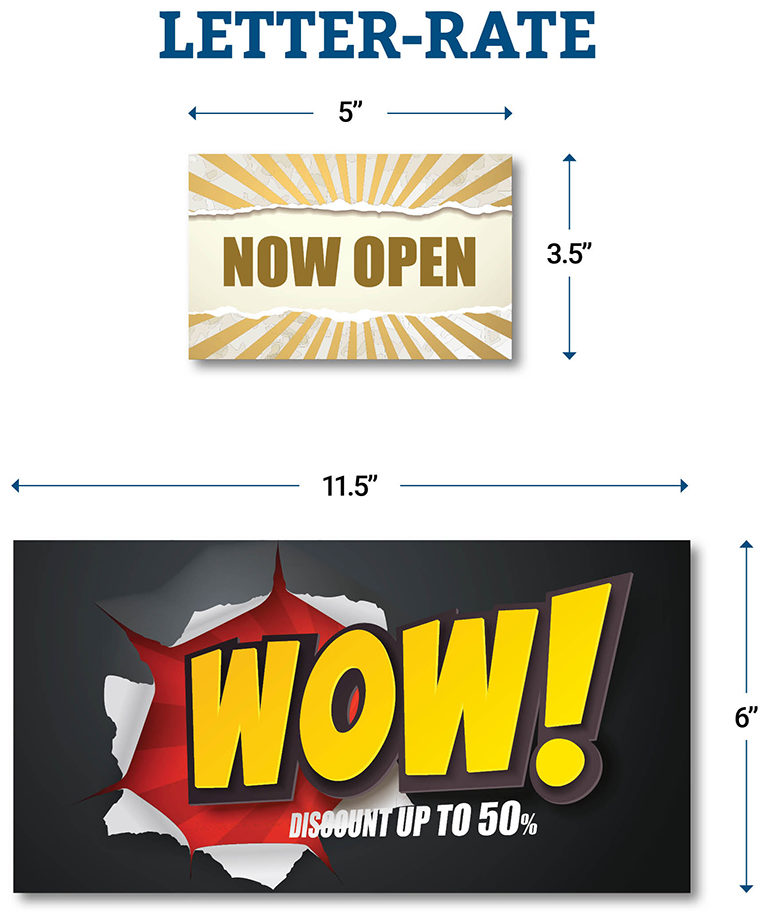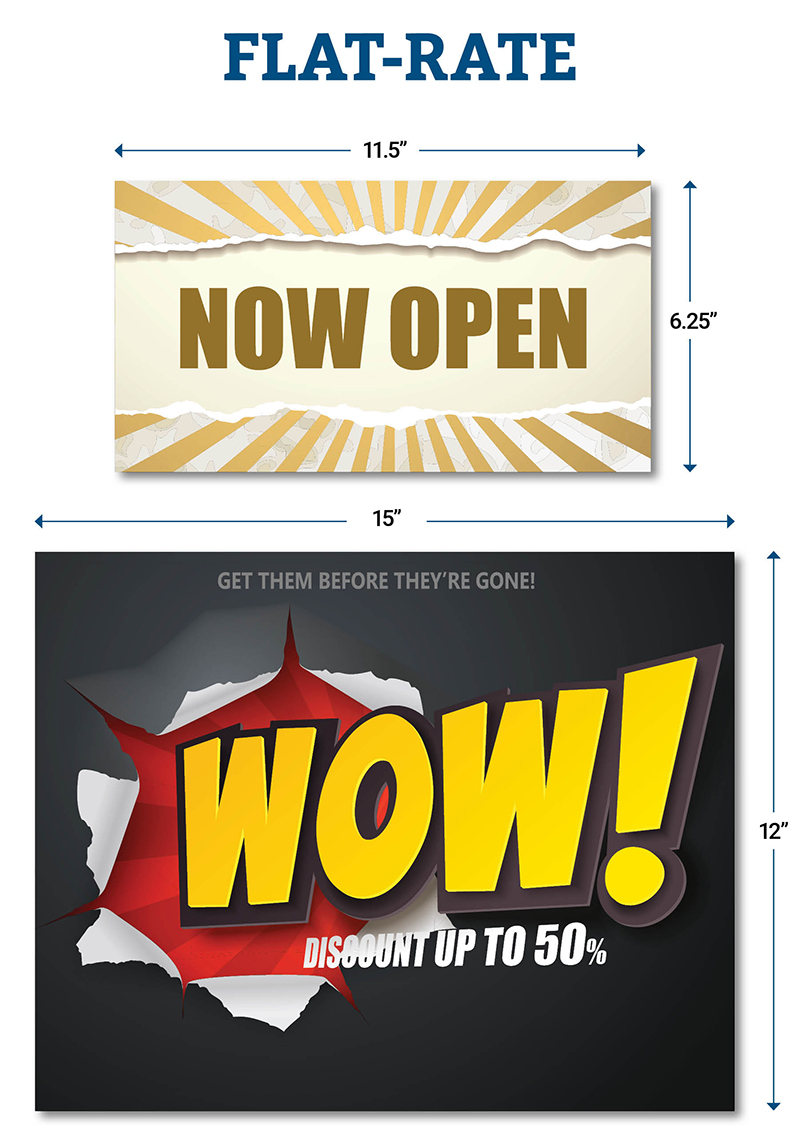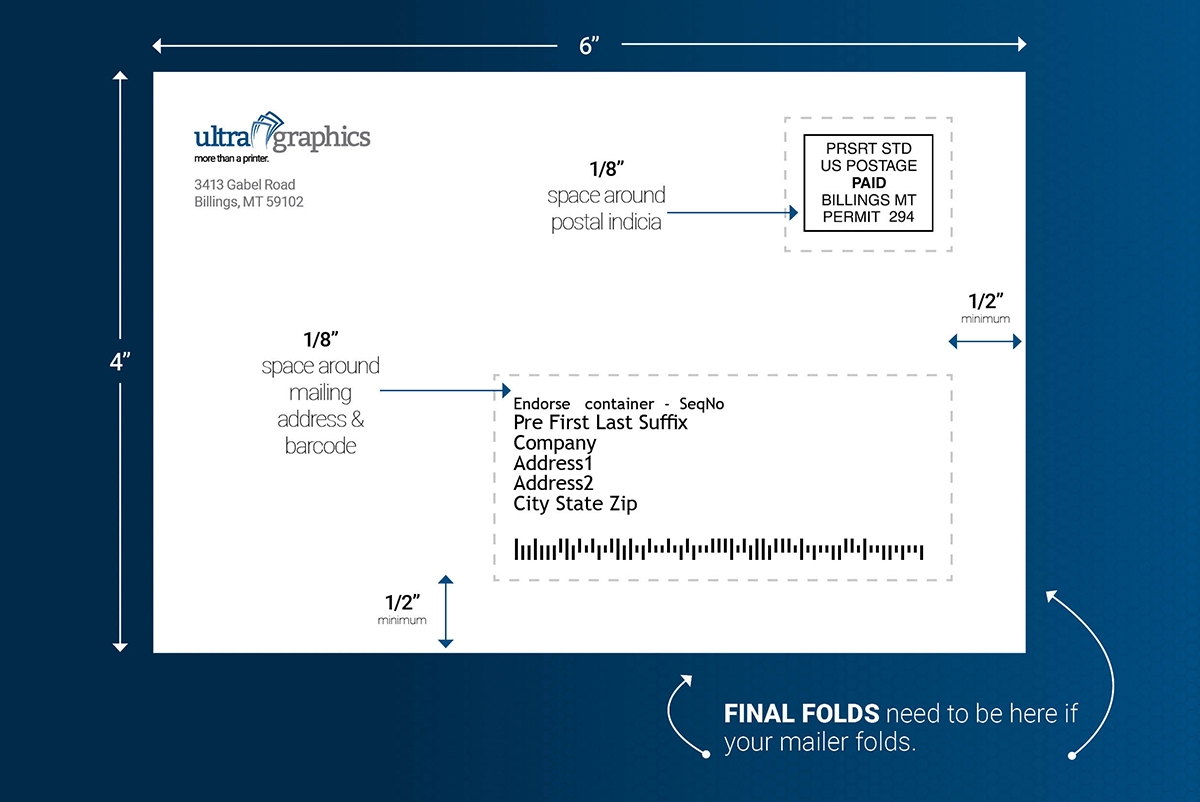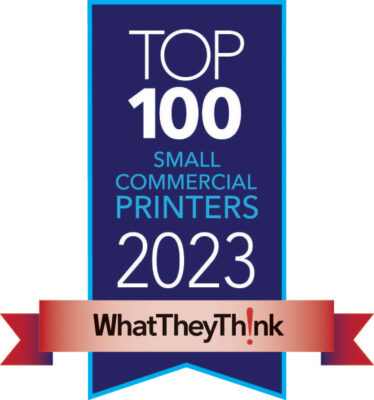The savvy marketer already knows that direct mail works wonders for successful reach and engagement, but just in case you needed some extra reinforcement, a recent survey by Small Business Trends* provides some great insights into the modern consumer:
- 54 percent of consumers surveyed said they want to receive mail from businesses they’re interested in.
- 59 percent of U.S. respondents and 65 percent of Canadian respondents agreed with the following statement, “I enjoy getting postal mail from brands about new products.”
- 56 percent of customers find print marketing to be the most trustworthy type of marketing.
- 70 percent of Americans say mail is more personal than the internet.
*https://smallbiztrends.com/2017/01/direct-mail-marketing-statistics.html
The savvy marketer also knows that direct mail can be one of the most expensive channels due to the cost of postage. In this article, we’ll show you some tips on designing and preparing your direct mail in ways that will save you money at the Post Office, in some cases as much as 50 percent!
Introductory Concepts
The two most influential drivers of cost at the Post Office are whether you are sending bulk mail or First Class, and if your piece meets the USPS machinable standards. If you’re sending bulk mail, you can save up to 50 percent over First Class – but there are some requirements that have to be met, such as a minimum quantity of 200 pieces, a bulk-mail permit, and mail data that is pre-sorted and provided in a specific format. Using a mail service provider (like Ultra Graphics) means that this part of the process is seamless and transparent because we take care of it all for you. Machinability is the other major factor, and basically means your piece can be sent through the Post Office’s automated scan and sort machinery without needing manual assistance from a postal officer. Non-machinable pieces, whether First Class OR bulk mail, get an automatic 21 cent-per-piece surcharge, which can quickly turn a direct mail campaign into a much more expensive venture – cutting into your ROI.
Dimensions and proportions
Both First Class and bulk mail have rules that govern the size and proportion of eligible pieces, mainly affected by whether or not the piece is machinable. Again, this is because a piece that can be processed via the automated Post Office machinery means less time, effort, and cost.
For the letter-rate classification, the dimensions can be as small as 5” x 3.5”, and as large as 11.5” x 6”. Keep in mind, pieces that are as small as 5” x 3.5” can be easily lost or overlooked by the potential consumer – so we would recommend not designing to the minimum.
For flat-rate pieces, the piece can be as small as 11.5” x 6.25” and as large as 15” x 12”. The flat rate allows for pieces to have a commanding presence for the consumer, but keep in mind pieces that are too large can have issues fitting certain types of mailboxes.
Why the distinction between letter-rate and flat-rate? They simply use different machinery to be sorted and scanned at the Post Office. Letter-rate pieces are stacked vertically and are fed in a specific way to have the address barcodes properly scanned, while flat-rate pieces are run on a standard conveyor and have a less-precise scanning process.
Proportion on the other hand, only affects letter-rate pieces (again, due to the way in which they are machined). Essentially, the trick to check if your proportions are acceptable is to divide the width by the height, and make sure the result lands between 1.3 and 2.5. For example, if you are sending a 8.5” wide by 5.5” high postcard, the resulting ratio of width to height is 1.54 (8.5 / 5.5 = 1.54) which is acceptable. The closer your pieces get to square-proportioned or extremely wide and short, the less machinable they come – and you will get hit with the surcharge. While those pieces can be cool and unique, you’ll pay for it in higher postage costs!
Weight and Thickness
You will start to see that the ability for a piece to be machinable is just about the biggest factor affecting the price. In regards to the weight, there are limitations set by the Post Office to help with their ability to effectively process thousands and thousands of pieces of mail per day. First Class mail pieces can’t be heavier than 1 ounce. Bulk mail letter-rate pieces can’t be heavier than 3.5 ounces, and bulk mail flat-rate can’t be heavier than 4 ounces. Keep within those limits and you’ll get the normal rates for those pieces. Go over the weight limit there will be an additional per-ounce or per-pound charge. Those limitations are enforced down to the 100th of an ounce, so make sure you’re checking the weight of your mail!
Thickness is also a factor affecting machinability, and pieces printed on thin or flimsy paper get caught up, torn, bent, and otherwise create headaches for the Post Office staff. As a general rule if you’re sending a letter-rate or flat-rate postcard, make sure it’s printed on heavier stock. Here at Ultra Graphics we recommend a minimum of 80lb cover.
Design and Fold
The mail panel includes information that can be scanned by the Post Office to ensure accurate deliverability, and is one of the most important parts of a mail piece – specifically for bulk mail. It includes not only the address information, but a machine-readable barcode that allows the processing to be exponentially faster compared to a human. The size and placement standards are there to make sure the scanning camera can see the mail panel as it’s passed through for a split second.
The rules of the mail panel and barcode vary by the kind of mail you’re sending, so for the most part we would recommend contacting a mail service provider with details before designing the piece, but here are a few general tips to get you started:
- The mail panel is typically in the bottom right corner of the piece, ½” from the right and bottom edge.
- If the piece is being sent via bulk mail, there needs to be a postal indicia with the bulk mail permit above and to the right of the return address.
- There needs to be at least ⅛” white space around the mailing address and barcode.
- The orientation of the mail panel determines the orientation of the piece as far as the Post Office machines are concerned. This means that you can have a vertically-designed piece, but have a mail panel that is rotated 90 degrees to be parallel with the longer edge.
If you’re sending a mail piece that is folded, it’s important to make sure the final fold(s) are on the right and bottom sides when looking at the mail panel. If there are open sides that are at risk of getting caught in the machine or tearing, use adhesive tabs to help keep them closed. These pieces are getting whipped through the Post Office machines at a pretty high speed (up to 30,000 per hour!), so anything you can do to limit the chance of tearing or bending will be worth it.
Data Management
Data management isn’t specific to First Class or bulk mail, and is essentially just good practice for any direct marketing campaign. Logically, if your data list is targeted and clean, you will save money because you’re not sending wasted mail. Get in the habit of regularly checking and cleaning your mailing list, removing old addresses, and updating information. This will have a direct effect not only on your mail pieces, but other marketing channels you use the data for.
Specifically for bulk mail, the data has to be submitted in what is referred to as pre-sorted. Essentially pre-sorting involves providing the data to the Post Office ready-to-mail, and is a large part of why bulk mail is cheaper than First Class. For bulk mail data to be pre-sorted, it needs to be run through a data processing automation software that adds necessary info such as the mail barcode, container and sequence numbers, and endorsement numbers.
Non Profit Bulk Mail
Using a non-profit bulk mail permit can save up to 50 percent in postage over regular bulk-mail. With one of the primary goals of a non-profit being to save money and limit costs – this one is a no-brainer. Of course the primary requirement is that you have to be a non-profit organization, and be able to prove it by providing documentation to the Post Office. To get a non-profit bulk-mail permit, complete the form PS 3624 and provide the necessary documentation. You can find out more about non-profit permits by visiting the Post Office website. If you are a non-profit, it would never make sense to send out bulk mail without a non-profit permit.
Of course, here at Ultra Graphics we are a mailing service provider, and as such we have both a regular bulk-mail permit and non-profit bulk mail permit for use in our customer’s projects. If you’re a non-profit, we can also provide guidance on getting authorized to use non-profit bulk mail permits, which can start saving you money for your projects!
Conclusion
If we were to try to sum up the entirety of this article in a short sentence it would be this: mail is hard. The rules are complex and constantly changing, the standards can be confusing and misleading, and failure to comply results in hefty postage costs that can damage a campaign’s success. Ultra Graphics is here to help with the knowledge and experience of a business that processes, produces, and mails as many as hundreds of thousands of pieces every month.
If you have any questions about mail (or fulfillment), please don’t hesitate to call or email us, we would love to help. Learn more about our business mail services.







